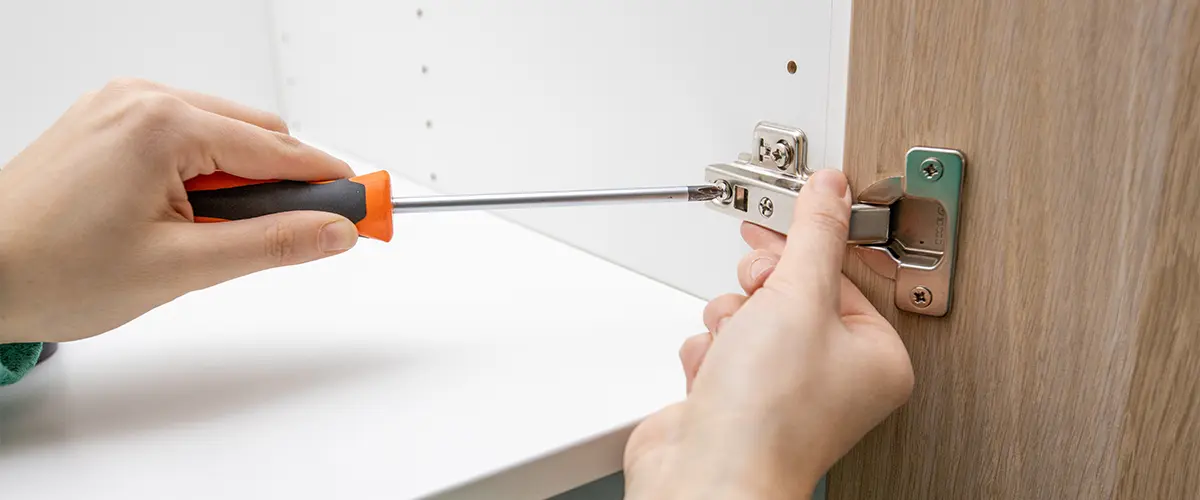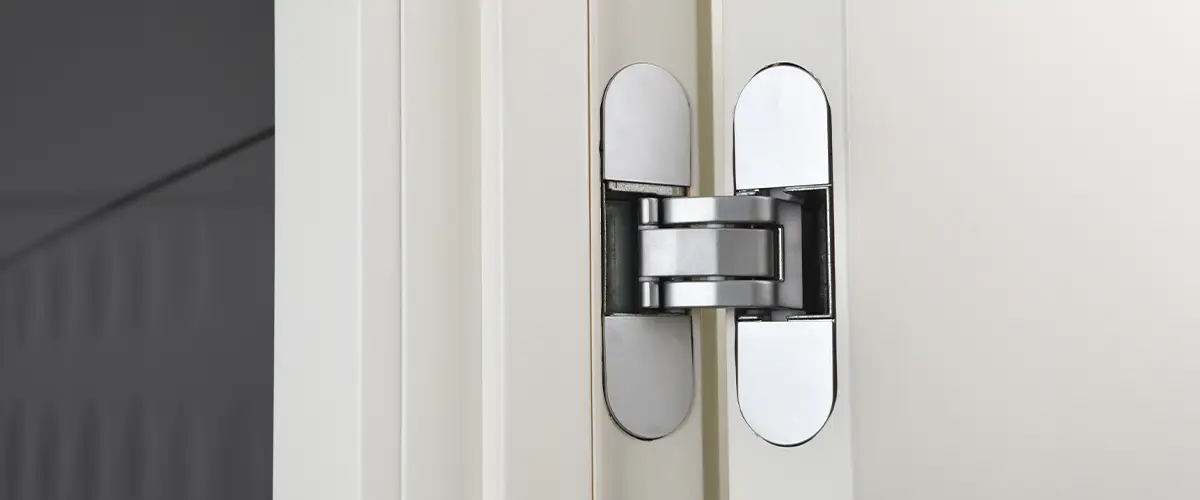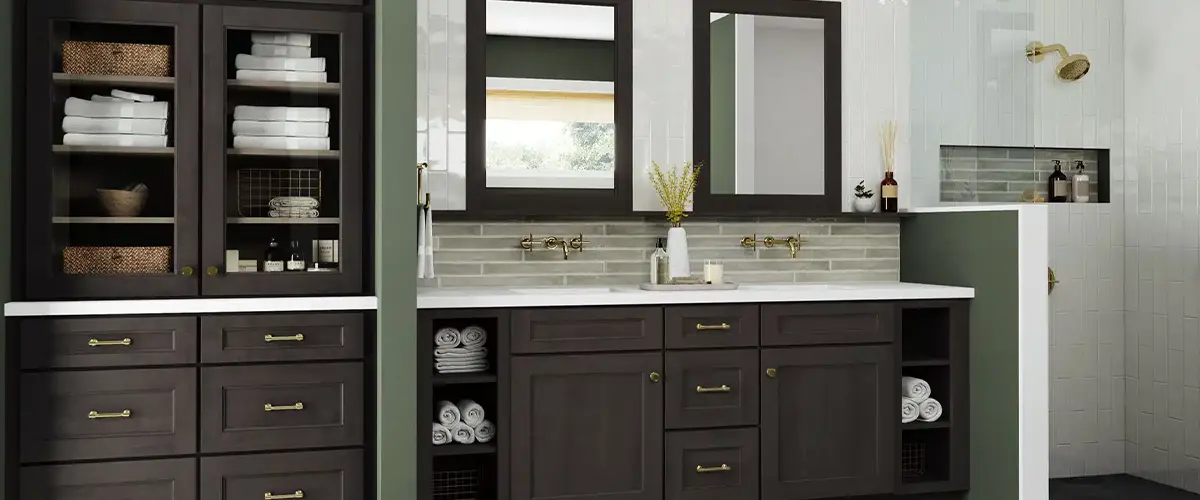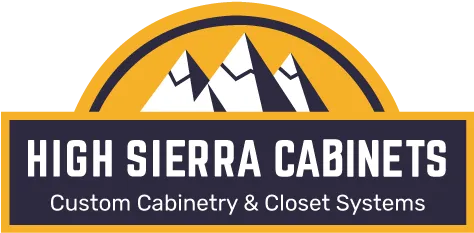A Simple Guide To Understanding Cabinet Hinge Types
When it comes to upgrading or installing cabinets, hinges might not be the first thing on your mind, but they’re really important to both the function and appearance of your cabinetry. Hinges come in various types, each designed for specific uses and offering different benefits.
Here’s a simple guide to help you understand the main types of cabinet hinges and how to choose the right one for your needs!

1. Overlay Hinges
Overlay hinges are among the most common types used in cabinet construction. They are called “overlay” because they allow the cabinet door to sit on top of the cabinet frame, overlapping it when closed.
This type of hinge is great for providing a clean, smooth look since the door fully covers the cabinet frame. Overlay hinges are widely used in both face-frame and frameless cabinet designs.
Types of Overlay Hinges:
- Partial Overlay: The door covers part of the cabinet frame, leaving a gap between doors.
- Full Overlay: The door completely covers the cabinet frame, creating a seamless look between doors.
2. Inset Hinges
Inset hinges are designed for cabinet doors that sit flush with the cabinet frame when closed. This type of hinge is perfect for a more traditional, crafted look, as it allows the door to blend in smoothly with the cabinet face. Inset hinges can be visible or hidden depending on the style you choose.
Types of Inset Hinges:
- Exposed Inset Hinges: The hinge is visible from the outside, adding a decorative element to the cabinet.
- Concealed Inset Hinges: The hinge is hidden inside the cabinet, offering a cleaner look with no visible hardware.
3. Concealed (European) Hinges
Concealed hinges, also known as European hinges, are popular for their sleek, hidden design. When the cabinet door is closed, these hinges are completely out of sight, providing a modern, streamlined appearance.
They are adjustable, making them an excellent choice for precision and easy installation, particularly in frameless cabinets.
Advantages of Concealed Hinges:
- Adjustability: Many concealed hinges allow for easy adjustments in three directions—height, side-to-side, and depth—ensuring perfect alignment of doors.
- Soft-Close Feature: Some concealed hinges come with an integrated soft-close mechanism, preventing doors from slamming shut.

4. Pivot Hinges
Pivot hinges are mounted at the top and bottom of the door, allowing it to pivot open rather than swing. This type of hinge is often used in specialized cabinetry, like lazy Susans or corner cabinets, where traditional hinges might not provide the needed range of motion.
Pivot hinges offer a unique and practical solution in tight or unusual spaces.
5. Butt Hinges
Butt hinges are a classic type of hinge, made of two rectangular leaves that are attached to the abutting surfaces of the door and the cabinet frame. They are visible when the door is open, and they are typically used in traditional cabinetry.
While they don’t offer the adjustability of concealed hinges, they are sturdy and straightforward, making them a reliable choice for many applications.
6. Wrap-Around Hinges
Wrap-around hinges are designed with an extended leaf that wraps around the edge of the cabinet face frame, offering extra support and stability. These hinges are commonly used in face-frame cabinets and provide a durable solution that helps distribute the weight of the door more evenly.
7. Self-Closing Hinges
Self-closing hinges are designed to pull the cabinet door closed automatically when it’s near the closed position. This type of hinge is particularly useful in kitchens and bathrooms, where doors need to stay securely shut to prevent moisture or pests from getting inside.
Many self-closing hinges also feature a soft-close mechanism to ensure that doors close quietly and gently.

How to Choose the Right Hinge
- Cabinet Type: Determine whether you have frameless or face-frame cabinets, as this will influence your hinge choice.
- Door Overlay: Decide whether you want full overlay, partial overlay, or inset doors, as this affects the hinge type needed.
- Aesthetic Preference: Consider whether you want the hinges to be visible or concealed for a cleaner look.
- Functionality: Think about features like self-closing or soft-closing mechanisms that can add convenience to your cabinets.
Hinge Materials and Finishes
Material Options
- Steel: Steel is one of the most common materials used for cabinet hinges. It’s strong, durable, and can handle heavy doors without bending or breaking. Steel hinges are a solid choice for almost any environment, from kitchens to bathrooms, because they resist rust and corrosion, especially when coated with protective finishes.
- Brass: Brass hinges offer a touch of elegance and are known for their corrosion resistance. Over time, brass develops a unique patina, giving it a vintage, classic look that many homeowners love. Brass hinges are ideal for traditional or antique-style cabinets and are often used in areas where a warm, golden tone adds to the overall design.
- Stainless Steel: Stainless steel hinges are highly durable and resistant to rust, making them perfect for environments with high moisture levels, like kitchens and bathrooms. They have a sleek, modern appearance and are often used in contemporary or minimalist designs. Stainless steel is also a low-maintenance option, as it doesn’t tarnish or require much upkeep.
Finish Options
- Chrome: Chrome finishes are shiny and reflective, giving your hinges a sleek, polished look. This finish is commonly used in modern and contemporary designs, where a clean, mirror-like appearance complements other stainless steel or chrome fixtures in the room.
- Nickel: Nickel finishes, especially brushed nickel, have a soft, matte sheen that’s less reflective than chrome. This makes them a great choice for transitional or modern designs where you want a sophisticated, understated look. Nickel finishes blend well with various cabinet styles and are versatile enough to suit both warm and cool color schemes.
- Bronze: Oil-rubbed bronze and other bronze finishes are perfect for creating a rustic or traditional feel. These finishes have a darker, earthy tone that adds warmth and depth to your cabinets. Bronze hinges work particularly well with wood cabinets that have a rich, natural stain, enhancing the overall cozy, inviting atmosphere.
- Matte Black: Matte black hinges are increasingly popular in modern and industrial designs. The matte finish doesn’t reflect light, giving your cabinets a bold, dramatic look. Black hinges can either blend into dark cabinetry for a seamless appearance or contrast sharply against lighter cabinets for a striking visual effect.

FAQs - cabinet hinge types
Elevate Your Bathroom with Expert Cabinet Design from High Sierra Cabinets
Choosing the right hinges can elevate both the functionality and style of your cabinets. At High Sierra Cabinets, we offer expert advice and quality installation to ensure your bathroom cabinets are as beautiful as they are durable. Ready to upgrade your bathroom?
Contact High Sierra Cabinets today to discuss your project and discover the perfect hinge options for your home. (775) 242-6832
